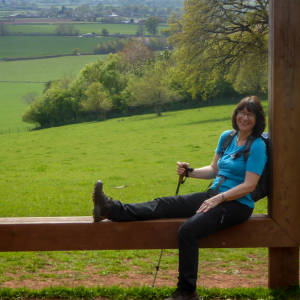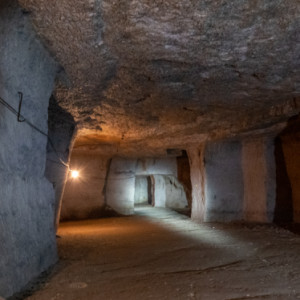Beer
It was an interesting day out with the geology group. It was very warm and sunny as we arrived at Beer Quarry for a tour of the limestone caves / quarry. A fascinating tour with a very long history of mining from the Roman times, Saxon, Norman through until the 1920's. You can see the historical workings through the shapes of the caves. Life was extremely difficult for those working here and we were told of various individuals experiences and lives. The stonemasons were highly skilled and paid well. They worked on the Beer stone underground when the newly extracted stone is still soft as it hardens quickly once brought into the outdoor air. They were allowed as many tallow candles as they needed whereas the people extracting the stone by hand had to buy just one candle to be able to see by. Hours were long, noisy and the air full of dust with poor health and safety, resulting in early deaths. Beer stone was prized for its colour and workability and is used in cathedral and church features such as doors and windows and are found in many places including Exeter Cathedral, Tower of London, Westminster Abbey, St Pauls Cathedral. It also is the home to Horseshoe bats during winter. You also find a dark flint in the quarry which is also used in local houses and walls in the area.
The underground workings / caves are a constant 7C throughout the year so it was a relief to go back out into the open where it was much warmer. We then headed over to Beer Beach walking past all the holiday makers towards the west where you can clearly see the upper greensand rocks with the chalk cliffs above. Next it was to Branscombe beach where after some refreshment we walked along the beach towards the west to view the anhydrite bands of gypsum and some 'pudding stones' silcretes containing fossils and nodular flints.
A good day out.


Comments
Sign in or get an account to comment.


